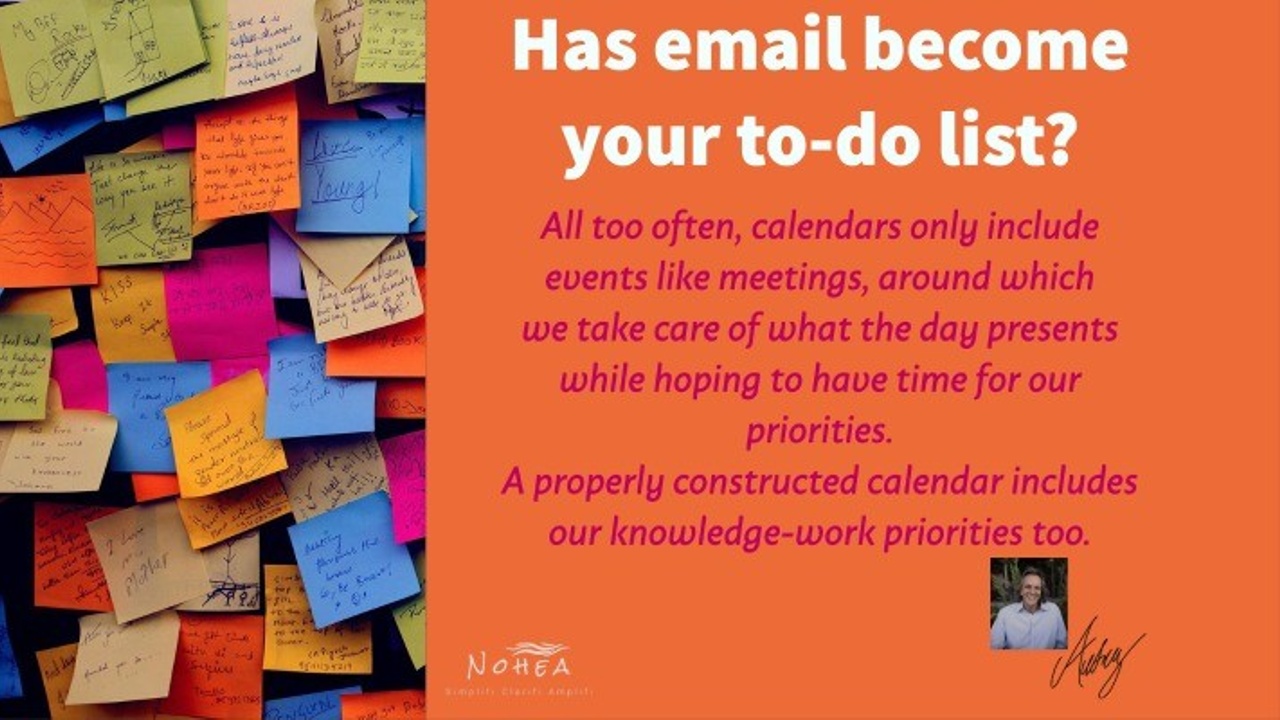Has email become your to-do list?

In many ways, email is a to-do list created by others.
When someone sends us an email with a request, what do we typically do? Probably something like this:
- We read and internalize the message 🤨
- We check our calendar 📆
- A helpful inner angel leads us to say “yes” 👼🏼
- And eventually, we feel stressed because there isn't enough time to do our most important work and far too much coming at us 🙉
A 15-minute meeting with myself every week to proactively review next week's priorities and place them in a calendar can help us say “no” to things that aren’t important to us. We can overcome much of the pressure to say ”yes” with one glance at our calendar.
All too often, calendars only include events like meetings, around which we take care of what the day presents while hoping to have time for our priorities.
A properly constructed calendar includes our knowledge-work priorities too.
When we get a request from someone, a calendar with purposefully constructed time-blocks forces us to answer a key question: Is what I'm being asked to do important enough for me to say "no" to my planned priorities?
It's no longer a question of whether we want to jump into action. Reminding ourselves that we've already committed to something makes it easier for us to make the correct guilt-free decision.
Instead, it's about whether we squeeze in the time or adjust our previously committed to-do's.
Sometimes, the answer might be “yes,” but often it isn't.
Of course, life happens. Just because we've planned our week doesn’t mean each day can or should be entirely rigid. Responsive leaders rarely have a day go exactly as planned.
That’s ok.
“Plans are useless, but planning is everything.” (President Dwight Eisenhower)
The power of a calendar comes from intentionally directing our energy in the right direction.

Want more like these delivered to your email 2 months before publishing?

